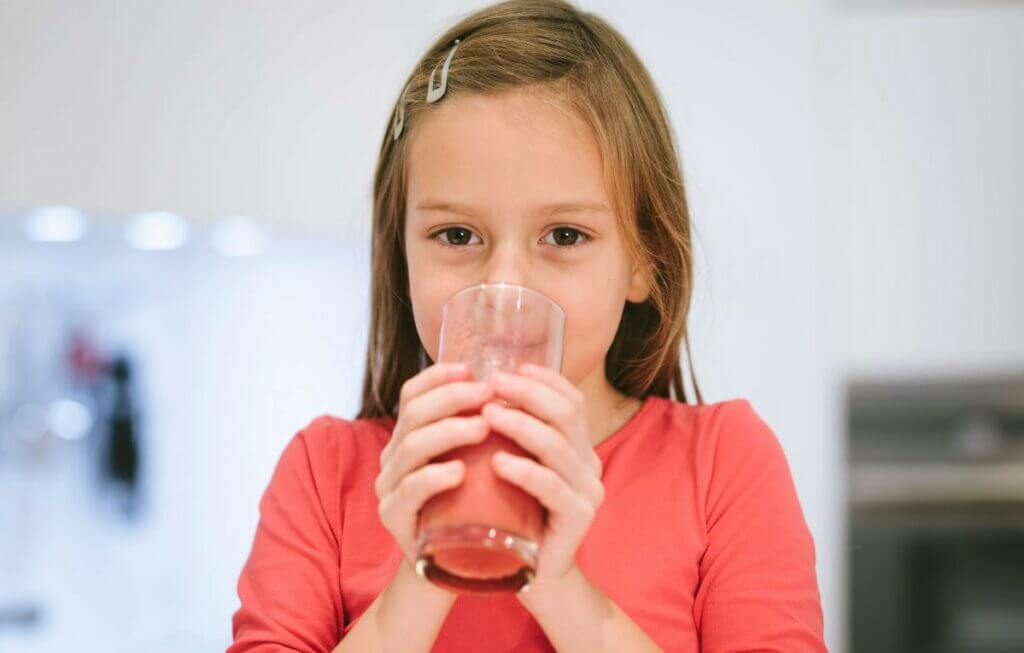
A proprietary blend of 15 different allergenic food proteins is showing promise in desensitizing allergic children to more than one food allergen at a time.
A recent clinical trial captured results after 40 weeks of daily dosing with the powdered oral immunotherapy mix, called ADP101. Fifty-six percent of children ages 4 to 17 allergic to more than one food could consume at least 600 milligrams (mg) of two or more of their allergens before starting to react. That’s the equivalent of about two peanuts, more than a tablespoon of milk, one to two bay shrimp, or two Saltine crackers for wheat.
About 44 percent could consume 1,000 mg or more of two or more of their allergens.
ADP101 is being developed by Alladapt Immunotherapeutics. “We saw people desensitizing to more than one allergen at a time,” says Ashley Dombkowski, PhD, Alladapt’s CEO. “We saw this, even in this early study, not just with foods like walnut and pecan, which are cross-reactive, but totally different, non-related foods.”
The co-founders of the Menlo Park, California-based company are Dr. Kari Nadeau, an allergist-immunologist, and Dombkowski, a Silicon Valley biotech executive.
Each ADP101 dose contains proteins from 15 allergens: peanut, milk, egg, wheat, sesame, shrimp, six tree nuts (almond, hazelnut, cashew, pistachio, pecan and walnut) and two fish (cod and salmon).
Multiple Allergens Patients: Reactive Group
ADP101 is a form of oral immunotherapy (OIT), in which patients consume gradually increasing amounts of their allergen over the course of several months. They then undergo an oral food challenge, to see whether they can tolerate a specified amount of it without reacting.

Alladapt presented the topline results of their Phase 1/2 clinical trial (the Harmony Study) at the June 2023 European Academy of Allergy and Clinical Immunology Congress.
The trial included 61 children ages 4 to 17, who tested as highly allergic to between one and five foods among those in the ADP101 formula. The most common allergy was peanut, with 32 of the kids highly allergic to it, whereas only one or two kids were highly allergic to foods such as salmon, almond, wheat, shrimp and cod. To be considered highly allergic, children had to react to 100 mg or less of a food during a challenge at the start of the trial.
About half of the kids tested as highly allergic to two or more foods, while half were highly allergic to one food. (Many of those children were allergic to other foods as well, but they were less reactive than the highly reactive threshold set by researchers.)
There were also 12 adults in the trial, but those results have not yet been released.
Study participants were randomly assigned to receive either low-dose ADP101, higher dose ADP101, or a placebo. The study was “blinded,” so no one knew which group they were in. Each day’s dose contained precise amounts of each of the proteins, and the powder could be mixed into a smoothie, applesauce or other food.
Low-Dose Vs. High-Dose Protocols
Both the low-dose and high-dose ADP101 had a starting dose of 5 mg for all 15 allergenic proteins combined, 0.33 mg each. The low-dose group gradually scaled up to a total 1,500 mg for all of the proteins combined during the maintenance phase. Meantime, the higher dose group topped out at 4,500 mg total protein during maintenance. The average time to reach the maintenance level was a bit over 20 weeks, and the weeks that followed were the maintenance phase.
At 40 weeks, the children again underwent food challenges to see how much of their allergens they could tolerate before starting to react. The high-dose ADP101 group had the more impressive topline results. It was in that arm, for instance, that 56 percent could consume at least 600 mg of two or more allergens before reacting.
According to company data, only one child in each treatment arm dropped out because of side effects. Adverse events were mild to moderate and occurred during updosing. There were no severe cases of anaphylaxis.
“It was very well tolerated,” Dombkowski says. As with other forms of OIT, a rest period in which patients refrain from exercise after dosing is recommended.
Prospect of Broadening OIT
Dr. Brian Schroer, a pediatric allergist at Ohio’s Cleveland Clinic, said ADP101 has the potential to make OIT available to more children with food allergies. About 40 percent of kids with food allergies are allergic to multiple foods.
ADP101 covers all the major food allergy groups, Schroer notes. Families of kids with multiple food allergies may find the prospect of a single product to desensitize to all foods more attractive than having to dose each food separately. He notes that, if approved, ease of use may make more families who are on the fence about OIT willing to give it a try.
A single product that knocks out multiple foods at once could also encourage more allergists to gear up their practices to offer OIT.
“The key with this product is it covers the broad range of patients with multiple food allergies,” Schroer says. “Not only is that a benefit to the patients who have multiple food allergies, but more patients will have the ability to get treatment.”
Additional data he would like to see: Whether certain combinations of food allergies have higher rates of side effects and desensitization success than others.
Previous OIT studies have shown that foods such as milk and egg have higher rates of reactions, such as stomach pain and nausea during desensitization, as well as lower efficacy rates, than foods such as peanuts and sesame. Alladapt hasn’t yet shared data on how well ADP101 does for specific combinations of allergens.
“Right now we just know broad-based outcomes measures,” Schroer says. But it’s possible that ADP101 may have varying rates of success depending on the allergen.
Next Steps on Multiple Allergens OIT

Alladapt aims to win approval from the Food and Drug Administration, which is necessary for eventual insurance coverage. The company is in discussions with the FDA about a planning for the Phase 3 trial of the Harmony Study. They hope to launch it in mid 2024.
The company is finalizing building a 50,000 square foot manufacturing facility for ADP101 in Philadelphia. “We feel an urgency in this category to bring our drug forward,” Dombkowski says. With the early results, she says, “we learned things to enhance in our Phase 3 that think should take efficacy even higher.”
By raising the threshold of reactivity to all of a child’s allergens using an eventually FDA-approved treatment, Dombkowski says the goal is to make life safer for allergic kids. This will improve quality of life for them and their families.
The kids who completed the Phase 1/2 trial will roll over into an open-label extension trial. Researchers will study whether desensitization continues to improve past 40 weeks. As well, the kids who were in the placebo arm of the trial will be offered the active formula. The team hopes to have results from that in early 2024. They also hope to eventually expand their research to younger and older age groups.
“We want them to be able to take that international trip, or go to the baseball game or go to the sleepover and not have that paralyzing fear that accompanies the lives of so many patients,” Dombkowski says.
Related Reading:
Viaskin Peanut Patch Desensitized Most Toddlers in Trial
Study Shows Skin Water Loss Can Predict Anaphylaxis in Oral Challenge





